Why does my autistic child suddenly meltdown “out of nowhere”?
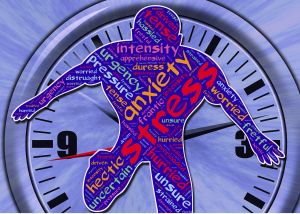
*”A meltdown (or shutdown) is when a child becomes very distressed and emotionally overwhelmed. They can be caused by many different factors, such as situations that are unpredictable, sudden changes or things not happening as the child was expecting. They can also be delayed as the child takes time to process a difficult situation and sometimes are caused by a build up of stressors so not one particular thing has triggered the distress. The child in meltdown does not intend to hurt or harm or indeed cannot often control what is happening to them. They are often frightened, overloaded and the way we react to them can often make it worse, not that we ever intend that!” Lynn McCann
Understanding some of the triggers and also how to support a child from meltdown to recovery can take some working out – but here, Sarah Loveridge, one of our specialist teachers, gives some advice on where to look first.
Whether you’re a teacher, TA or parent of an autistic child, we’ve all been there. Everything seems to be going fine and then seemingly “out of nowhere” we’ve got a huge meltdown on our hands. Where did it come from? Was it something we said?
Believing that meltdowns come from nowhere is a dangerous notion. It leads to a sense of helplessness and frustration in us as adults as we scramble to try and figure out what’s caused this outburst of emotion. It also changes our perceptions towards autistic (and non-autistic!) children, painting them as unpredictable, out of control or just plain stroppy. Behaviour is often a communication that something isn’t right or that some need isn’t being met (whether that’s a toddler “needing” a toy at the supermarket, or a teenager “needing” to feel accepted, loved and supported – both demonstrations of a certain behaviour tell us something).
It might help to picture your autistic child as a bottle of fizzy drink. Every time they get triggered, they’re shaken up a little bit. This keeps happening throughout the day until suddenly the lid comes off and their emotions (sometimes quite literally) go everywhere. This is what we call a meltdown (or shutdown, when they internalise their distress) and it can often appear to come “out of nowhere”. This is because the triggers have been building up gradually until it all becomes too much.

The good news is that whilst with autistic children it’s never one-size-fits-all, there are usually some patterns we can look out for to help us support our autistic children before they hit the meltdown stage.
If we can spot these triggers and patterns throughout the day, then we’re one step closer to supporting our children better through the chaos that is daily life. This list is by no means exhaustive, but here are some key areas to look out for:
Often it is the actions of others that can cause the build up of stress and pressure. If the child isn’t being supported correctly at school, or if they are being picked on, left out or bullied by others. Check these issues out too. If a child can’t tell you, you will have to investigate and trust your instincts as parents or as professionals.
Communication
1. Whether your autistic child is non-verbal, talks a lot and has mature vocabulary, or is somewhere in between, they all have their own ways of communicating. If we push them to communicate constantly in a way that is difficult for them (eg lots of verbal communication with little or no visual support) then this can be very draining and may lead to meltdowns later in the day.
TOP TIP: Use visuals as much as possible rather than just relying on verbal communication, and make it a two way street. Get them to show you how they’re feeling or what they want, rather than trying to explain it. Use visual timetables to plan out the day and prepare them for any changes. Show them pictures of new or unfamiliar places (like the dentist) rather than just telling them. Using visuals can reduce anxiety and therefore hopefully also reduce meltdowns. We also need to give processing time – so pause often and don’t be too quick to repeat or rephrase something.
2. Some autistic children are very keen to chat, and will talk to you for hours about their special interest or ask a hundred questions about why you’re doing something. Although this may sound completely effortless it can actually be very draining, especially if they’re talking to somebody new.
TOP TIP: If you spot a pattern of your child being very talkative in the morning and then having consistent meltdowns in the afternoon, this might mean they need some help spreading their communication energy out throughout the day. Make sure they have access to sensory activities to support their energy levels and if you say you will have a chat later – make that a specific time and keep to it. They might need help recognising that they need some alone time in the afternoon to recharge. It’s all about balance – if they’re able to do a 2 hour presentation to a room full of people, great! Don’t stop them from doing that, but be aware that they will probably need to ensure nothing else is planned in for the rest of the day.
Social Interaction
3. This is heavily linked to communication and can be vastly different from day to day, depending on who your child is interacting with and how that interaction goes. Again, if they are in a new or unfamiliar situation (eg talking to a grandparent they haven’t seen for 3 years) then this will put more pressure and strain on them than if they’re talking to you or someone else they see regularly (and like!)
TOP TIP: Put some structure in place around social interactions. Maybe they could play their favourite card game with the new person and explain the rules carefully at the start. Maybe they can take some pictures of their special interest so they have something familiar to talk about. Keep the interactions short if possible, and you might want to discuss this time limit with your child beforehand. Again, they may need some time to regulate/recharge after a new interaction, so plan this into your day too.
And let’s remember the other side too – it shouldn’t all be up to the autistic child to change their behaviour. Tell the relation or visitor what their role is in this, for example you could encourage them not to keep asking questions or demand hugs. Ask them to give your child space if they want it and time to process. If you manage the time and intensity of new social interactions carefully, this can minimise the risk of a meltdown later on.
4. Social interactions in large groups can be very difficult for autistic children, as they try to focus in on lots of different people talking at once (especially if they have sensory needs – we’ll come back to that). Again, these times are often unstructured (eg playtime at school or playing football with friends) and it can be draining for your child to try and work out all the social rules required for them to “fit in” with those around them. Should they shout “goal!” every time someone scores? Does everyone hi-five or just certain people? How much eye contact does this game require? Why is everyone wearing a coat even though it’s sunny?
TOP TIP: Encourage the other children to explain rules of games very clearly (eg in our running race, where do we start and end? When do we go? etc) – it shouldn’t all be reliant on the autistic child changing to fit in so teach neurotypical (non-autistic) children how to adapt too. Give your autistic child an “out”, whether this is a space where they can go and sit if it starts to become overwhelming or a “job” they can do to get away for a bit. Again, be aware that after spending time in a group, your child may need some time alone or with one “safe” person to recharge. And also let’s remember, some autistic children might use playtime as a chance to regulate themselves after sitting in a noisy classroom during lessons so sitting alone might be just what they need.
Remember to give all children some specific praise when they interact well with those around them – things like “well done, you made space for each other” or “thanks for allowing everyone to choose a rule in your game” or “well done for giving each other a turn”. By stating specifically what they did well, we can give them some helpful clues about how to understand the social things around them whilst also explaining to others the social communication of your autistic child.
Sensory
5. Sensory needs that aren’t being met can be a constant source of frustration, confusion and sometimes even pain for an autistic child. For example, they may be hypo-sensitive which means their senses are under-stimulated and they fidget because their muscles are not giving the brain strong enough signals. To counteract this feeling, they rock on their chair or get up and walk around to wake their body up. On the other hand, they might be hyper-sensitive which means their senses are over-stimulated and light/sound/textures can become overwhelming. To deal with this, they may sing to themselves to block out other sounds, put their hands over their ears, run away or may hide under tables to get away from the light.
TOP TIP: It can be easy to create a “sensory safe space” at home or in your classroom by using a teepee, pop up tent or even just a blanket draped over a table. Ideally it will be quiet and fairly dimly lit, to minimise the potential for sensory over-stimulation. Create it together so it’s somewhere special and personalised for them. You could put a favourite book in there, or some music they like or a big beanbag to give their muscles some sensory feedback (especially if they’re hyposensitive) — personalise it together. This can then be used as a retreat throughout the day (before they become overwhelmed) to help them regulate, therefore reducing the risk of future meltdowns. It can also be a safe space to access during a meltdown to help them calm.
Remember – if they need movement then make it happen! Let them sit on a peanut or body ball, use a trampet, go for a walk or stretch with a yoga band. Let’s not teach children to suppress these needs but rather give them strategies and space to help them get sensory feedback in appropriate and safe ways.
6. If your autistic child’s senses are being over-stimulated they may live each day in a constant state of high alert. We might think they are anxious and worried all the time. Ever wonder why your child’s eyes dart around the room whenever someone moves? Or how they know exactly where each fire exit is? Or why they “patrol” the perimeter of your picnic blanket? Things that may seem small to us, like preferring a certain pencil or not liking the consistency of some foods can have a huge impact on how well autistic children are able to function from day to day.
TOP TIP: Don’t assume that a child is just being “fussy” or “picky” if they refuse certain objects or food. If possible, open a conversation with them about why they don’t like it. What in particular is making them squirm or refuse? Make a little note of it and see if you can start to spot any patterns. This will help you to understand your child more and figure out ways how to work around potential triggers that may lead to a meltdown later in the day. Pick your battles – do they have to eat porridge for breakfast or could they have some dry cereal? Is it vital that they wear a coat or can they manage without?
Recommended further reading – The Out-of-Sync child by Carol Stock-Kranovitz.
There is so much more we could say on this and we know that every child is different so be kind to yourself. It will take time and patience to figure out those specific trigger points but hopefully by starting to spot patterns throughout the day, the links between potential triggers and future meltdowns will become a little bit clearer. Your child will communicate to you and you can be their advocate. If they need adjustments, it’s the right thing to do.
Keep going, you’re doing a great job!
Written by Sarah Loveridge – Reachout ASC Teacher, May 2021

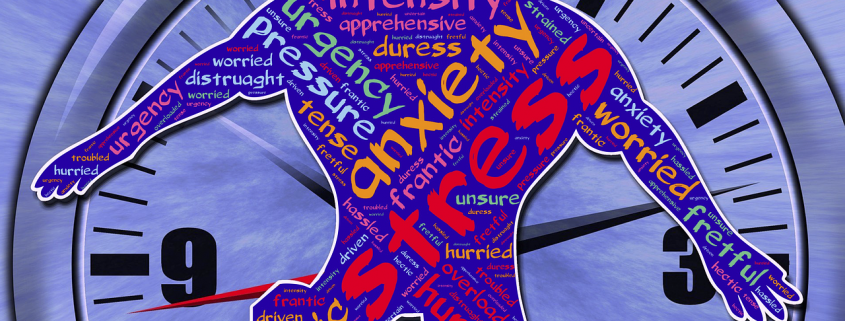 pixabay.com
pixabay.com Lynn McCann 2023
Lynn McCann 2023 
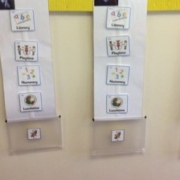
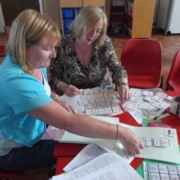
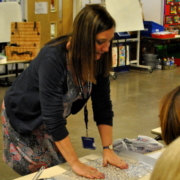
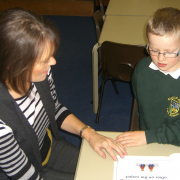 Lynn McCann
Lynn McCann 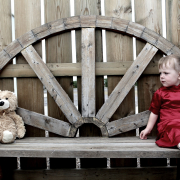 Free from www.pixabay.com
Free from www.pixabay.com 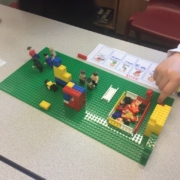
 Free from www.pixabay.com
Free from www.pixabay.com LynnMcCann
LynnMcCann